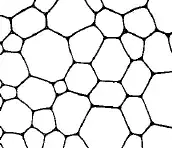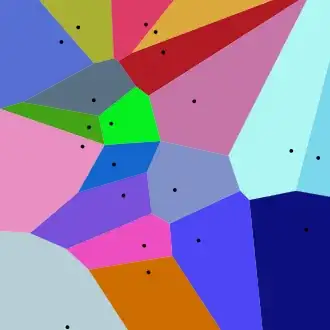It's rather easy to conceptualize a covering of the Euclidean plane by a countable set of convex but otherwise arbitrarily sized and shaped polygons (seen as subsets of the plane) without overlaps. It can - without loss of generality? - be required that two such polygons do share exactly one complete edge or none.

Is there an official name of such a covering?
I guess "polygonization of the plane" is not utterly wrong, but misses some aspects: convexity and uniqueness of shared edges.
Anyway: a polygonization of the plane induces an (infinite) graph with obvious vertices and edges.
(How) can such a graph be characterized?
("A graph is induced by a polygonization of the plane iff it is planar, 2-edge-connected, and ...")
The Euclidean plane is not the only manifold that can be polygonized in the way described above: there are polygonizations of the sphere, the torus and so on and so on.
(How) can the graphs be characterized, that polygonize any manifold?

